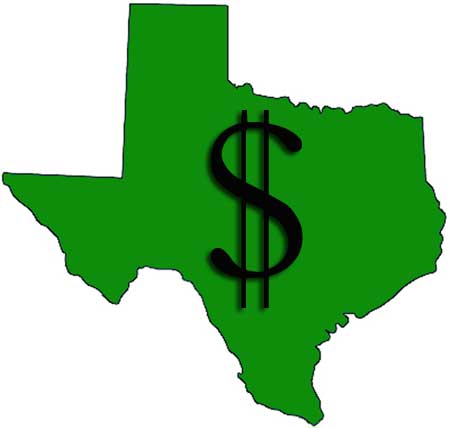
By Damien Brockmann
Here’s an easy problem for the Legislature to solve next session: Texas’ cities are facing additional federal regulations to clean-up their dirty air. Fortunately,, the state just happens to have over a billion dollars sitting in its coffers for that expressed purpose. The state programs have already been created; the fees for those programs have been collected; yet the Legislature has decided to withhold that money, leaving it sitting idle in the state’s bank account.
It has been a widely-used strategy by Texas budget-writers for over a decade -- hold on to dedicated fees from sources like automobile registration fees, the diesel-powered vehicle surcharge and vehicle emissions inspections to balance the state’s checkbook. It’s a strategy of “sweep and steal.” Sweep funds from their individual accounts to cover the state’s budget shortfalls, essentially stealing them from their original purpose - to fund the programs they were created to support .
Among the dedicated revenue programs that lose in the process are LIRAP (Low-Income Repair Assistance Program) andTERP (Texas Emissions Reduction Program). Both programs were created in 2001 by the Legislature to help counties tackle their air quality problems. TERP was created specifically to reduce diesel emissions while LIRAP was created as a voluntary program to provide assistance to low-income drivers to repair or replace older, dirtier vehicles.
After ten years of withholding dedicated revenue from programs like TERP and LIRAP, the state has accumulated over $4 billion (yes, that’s billion a “b”) in unspent fees. TERP and LIRAP fees alone account for over $1 billion in unspent revenue sitting in the state’s coffers.
Despite a growing consensus among lawmakers for an end to the dedicated fund shell game, the Legislature continues to underfund these important programs. In 2013, the Legislature only allocated 41% ($155 million) of the anticipated revenue for TERP and only 20% ($15.5 million) of available LIRAP 2014-2015 revenue. As a result, the unspent surplus continues to grow and fewer dirty vehicles are getting repaired or retired.
While many lawmakers in the Texas Legislature deny the benefits of many government programs, in the case of LIRAP and TERP, the need could not be greater. Both programs are designed to help control air pollution in high-density, high-ozone areas of the state like Houston, Dallas, San Antonio and Austin without excessive regulation. Both programs facilitate the removal of dirty vehicles from the roadways, incentivize new technologies, and decrease air pollution in the process.
In the case of LIRAP, sixteen counties voluntarily collect the fees from vehicle owners in those counties in order to improve public health in the region.. Air pollution from vehicles are a significant cause of unhealthy ozone in those counties and the LIRAP program helps working Texans repair or replace polluting vehicles. Yet, despite the decision by local elected officials to provide this public health benefit for their residents, the Legislature perennially withholds funds collected from the very counties that are the source of those funds and who voluntarily choose to participate. The Legislature is effectively tying the hands of counties, preventing them from accessing an available tool to reduce their ozone levels. Ironically the state could ultimately have to spend millions more to clean up the resulting increased pollution under the federal Clean Air Act.
Many conservatives would argue that efficient government and low-spending go hand-and-hand. In the case of these bloated dedicated funds however, that is counterintuitive. This next legislative session, lawmakers need to make good on their promise to manage the public’s money openly and effectively, by spending the existing surpluses from the LIRAP and TERP fees on the programs they were intended for. In the long-term, they will find that those programs will help avert over-regulation by the federal government while greatly enhancing the air quality of our beautiful Texas cities.